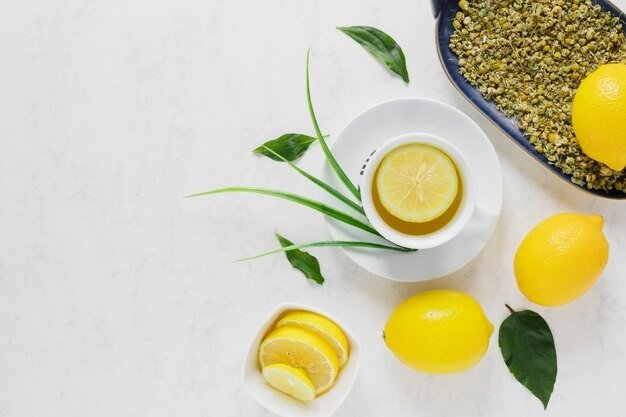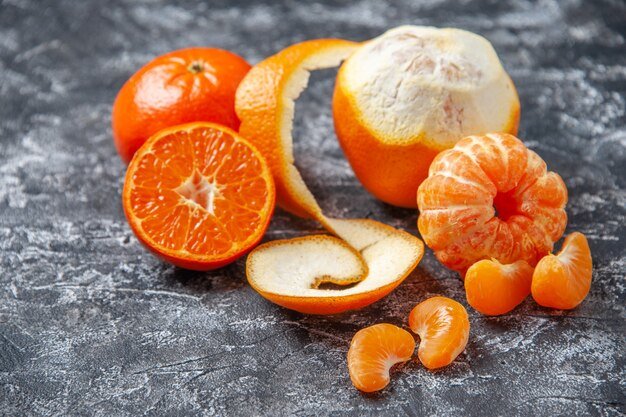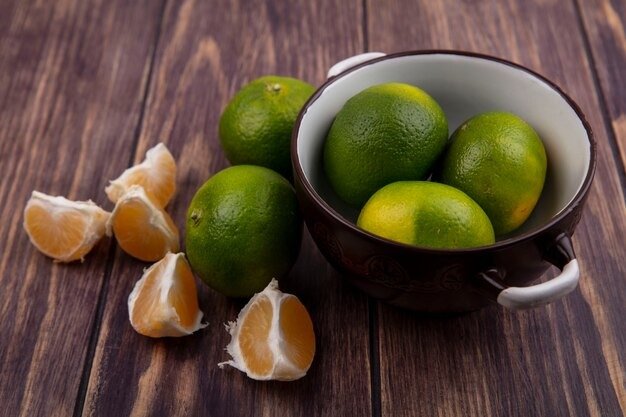A legacy of innovation, quality, and culinary experience.
Read our NewsletterBoost your health with 12 citrus fruits, from enhancing immunity to improving digestion. Find easy ways to add them to your daily meals and routines.
Citrus fruits are often recognized for their refreshing taste and vibrant colors, but their real power lies in their wide-ranging health benefits. From strengthening your immune system to supporting heart health and promoting glowing skin, citrus fruits are nutritional powerhouses that deserve a regular spot in your diet. Despite their common association with just Vitamin C, citrus fruits offer a spectrum of antioxidants, fiber, and essential nutrients that contribute to overall wellness. In this blog, we’ll explore 12 citrus fruits, some familiar, others less so, and dive into the surprising health benefits each one offers. We’ll also include tips and practical ways to incorporate them into your daily meals and routines. Whether you're a health enthusiast or simply curious about natural ways to maintain your well-being, this guide will educate and inspire you to harness the benefits of citrus.
Citrus fruits are among the most nutrient-dense fruits available, low in calories yet packed with vitamins, minerals, and phytochemicals. They’re especially rich in flavonoid compounds known to reduce inflammation and lower the risk of chronic diseases. Because they grow in various climates and have long shelf lives, citrus fruits are readily available and affordable year-round, making them a practical choice for anyone seeking to enhance their diet. Moreover, their natural acidity and high water content aid digestion and hydration, two cornerstones of overall health. As we explore each of the 12 citrus fruits below, we’ll highlight not only their health benefits but also easy, everyday ways to use them in meals, snacks, and even skincare.

Oranges are the most well-known citrus fruit and for good reason. One medium orange delivers over 100% of your daily Vitamin C needs, which helps strengthen the immune system and supports collagen production for skin and joint health.
Boosts immunity and reduces the duration of colds.
Improves iron absorption from plant-based foods, such as in a dish of Stuffed Grape Leaves.
Supports heart health with potassium and fiber.
Add orange slices to salads for a sweet, tangy flavor.
Use the zest in marinades or baked goods.
Drink fresh-squeezed juice, but limit intake due to natural sugars.
Grapefruit has earned a reputation in weight loss circles, but its benefits go beyond that. It's loaded with antioxidants like lycopene (especially in pink and red varieties) and supports cardiovascular health.
May lower blood pressure and cholesterol.
Helps control appetite through its low glycemic index, making it a great addition to any meal, such as alongside Fava Beans.
Contains compounds that may reduce insulin resistance.
Enjoy half a grapefruit before breakfast.
Mix grapefruit segments into a shrimp or avocado salad.
Be cautious if you're on medications; check with a doctor due to possible interactions.

Lemons are widely used in detox waters for good reason. Their acidity stimulates digestive enzymes, and their scent alone can have a mood-lifting effect.
Aids digestion and may reduce bloating.
Supports skin health through antioxidants.
Has mild antibacterial and antiviral properties, which are especially useful when paired with dishes like Golden Corn.
Start your day with warm lemon water.
Use lemon juice to preserve fruits or brighten dishes.
Add zest to sauces, dressings, or baked goods.
Often overshadowed by its yellow cousin, lime is equally powerful. Limes contain unique flavonoids and are a staple in many global cuisines.
Promotes skin clarity through detox support.
Boosts iron absorption and aids in collagen synthesis.
Acts as a natural preservative and immune enhancer, especially when added to recipes with Mushroom Slices.
Use lime juice in guacamole, salsas, and marinades.
Sprinkle over fruit or grilled vegetables for a tangy kick.
Add to sparkling water for a healthy, refreshing drink.

Tangerines are smaller and sweeter than oranges, making them a perfect snack. They’re rich in fiber and flavonoids that support metabolic health.
Helps regulate blood sugar levels.
Supports healthy digestion and gut bacteria.
Contains vision-supporting nutrients like lutein and zeaxanthin, ideal for adding to a dish with Pineapple Slices.
Pack in lunchboxes for an easy, peelable snack.
Toss segments into oatmeal or yogurt bowls.
Blend into smoothies for natural sweetness.
A variety of mandarins, including clementine, are seedless, easy to peel, and adored by kids and adults alike. They're a concentrated source of Vitamin C in a convenient size.
Excellent for preventing seasonal colds.
Helps maintain healthy skin and gums.
Contains antioxidants that support cellular repair, especially beneficial when added to Whole Peeled Tomatoes in a fresh dish.
Use in fruit salads or serve chilled as a quick snack.
Add to muffin or scone recipes for a citrus twist.
Pair with dark chocolate for a sweet, healthy dessert.

Pomelo is the largest citrus fruit and is often overlooked. It’s sweet, mild, and packed with fiber and potassium.
Aids weight loss with high water and fiber content.
Promotes heart health and reduces muscle cramps.
Contains naringenin, a compound with anti-inflammatory effects.
You can even juice it or eat it with Sweet Relish for a refreshing dessert.
Use segments in Thai-style salads with herbs and peanuts.
Juice it or eat it as a low-calorie dessert.
Peel and store in fridge for up to a week as a ready snack.
Blood oranges get their deep red color from anthocyanins, powerful antioxidants typically found in berries.
Fights oxidative stress and cellular aging.
May improve insulin sensitivity.
Contains anti-cancer compounds like hesperidin, making it a great addition to dishes with Grape Leaves.
Use in vinaigrettes, sorbets, or cocktail mixers.
Slice into green salads for color and sweetness.
Eat fresh for a tangy, berry-like flavor.

Popular in East Asia, yuzu is aromatic and intensely flavorful. It's often used in sauces, dressings, and even cosmetics.
Rich in Vitamin C and aromatic compounds.
May relieve stress through its calming scent.
Offers skin-brightening and anti-aging effects.
Add to salad dressings or ponzu sauce.
Use in baking for a fragrant twist on lemon-based desserts.
Try yuzu-infused bath or skincare products for a spa-like experience.
Also known as calamondin, this tiny citrus is sour and slightly sweet. Popular in Filipino cuisine, it's highly concentrated in Vitamin C.
Great for sore throat relief and cold symptoms.
May relieve stress through its calming scent.
Offers skin-brightening and anti-aging effects.
Squeeze over grilled meats or fish.
Use in teas or cooling drinks.
Mix with honey for a natural cough remedy.
A cross between a grapefruit, orange, and tangerine, ugli fruit is juicy and easy to peel with a flavor that’s sweet and tangy.
Strengthens immunity and reduces inflammation.
High in dietary fiber, aiding in digestion.
Contains limonoids that may fight cancer growth.
Juice it for a refreshing morning drink.
Use segments in breakfast bowls or wraps.
Add to salad for a citrusy zing.

Sudachi is a small, green citrus fruit used extensively in Japanese cuisine. Though less known, it’s loaded with sourness and therapeutic compounds.
Improves blood circulation and liver health.
Has antimicrobial and anti-inflammatory properties.
Aids in fat oxidation and metabolism.
Squeeze over grilled fish, noodles, or sashimi.
Add to dipping sauces for depth and brightness.
Use the zest in desserts or beverages for a tangy aroma.
Citrus fruits are more than just refreshing snacks; they're tools for maintaining health, enhancing meals, and supporting wellness routines. Each fruit we've covered brings its own unique set of vitamins, minerals, and plant compounds that can benefit everything from immunity and skin to heart and digestive health. What makes citrus especially valuable is its versatility; you can eat it raw, cook with it, juice it, or even use it in skincare. Start small by swapping your morning beverage for lemon water, adding orange segments to your lunch salad, or zesting lime over grilled vegetables. The key is consistency and creativity. By incorporating a variety of citrus fruits into your daily routine, you're not just adding flavor, you're investing in long-term health, one juicy bite at a time.